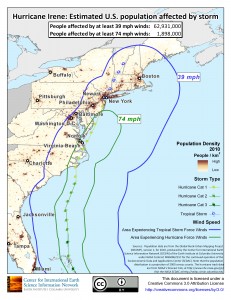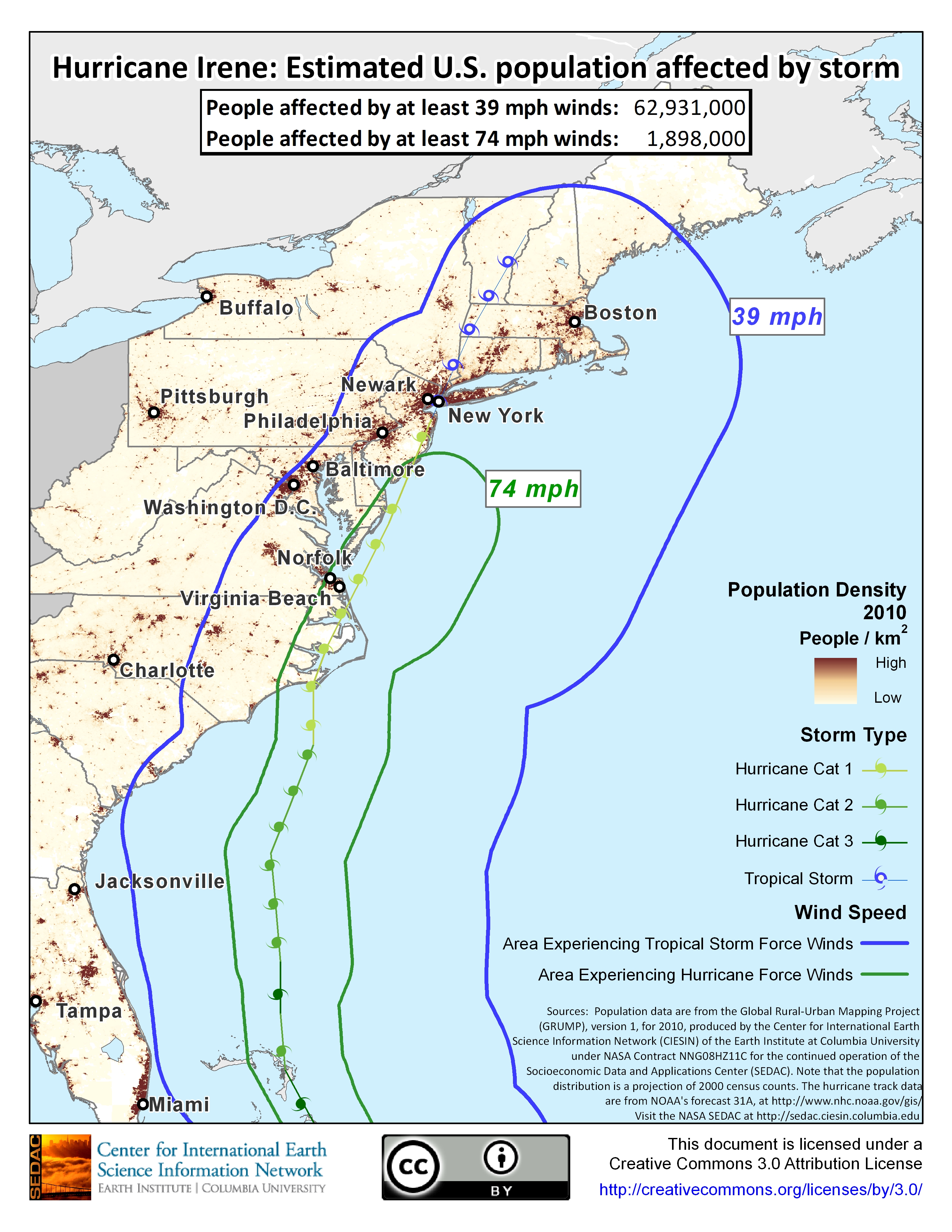General165
-

Population Map Shows How Close Irene Came to Being Even Bigger Disaster
A stark picture of how close Hurricane Irene came to being an even more serious disaster than it was emerges by overlaying a map of the storm track with a population distribution map. What made the storm as bad as it was had a lot to do with the fact that its trajectory took it…
-

Insuring Against Drought
Research economist Dan Osgood discusses index insurance and how it is helping some poor rural communities reduce hardships caused by drought in East Africa.
-

Walking the Tightrope of Groundwater Management
As climate changes and supplying water becomes more challenging, one company says it has a better management strategy.
-

Track the Number of People in Irene’s Path
As Hurricane Irene barrels up the East Coast, the number of people affected is rising. Based on calculations at 2 pm on Saturday, more than 47 million people were within 100 miles of the storm track; and nearly 69 million within 200 miles, according to Columbia’s Center for International Earth Science Information Network(CIESIN). Visit CIESIN’s…
-
New Web Site: Impacts of Climate Change/Variability on the Urban Northeast
The CCRUN Web site, developed and hosted by CIESIN, provides resources related to assessing and managing risks from climate change/variability in the urban Northeast.
-

A Famine Foretold
Climate and food security expert Jim Hansen lays out the root causes of food insecurity in East Africa.
-

Live, from the Bottom of the Sea
Lamont-Doherty scientist Timothy Crone is at sea off the Northwest U.S. coast, dropping sensors into the deep ocean as part of a major initiative to better understand oceans, climate and plate tectonics. Watch a live video feed from the latest dive at 3 p.m. EST.
-

Climate News Roundup: Week of 8/15-8/19
Climate change could drive native fish out of Wisconsin waters, University of Wisconsin News, 8/16 A recent study conducted by researchers from the University of Wisconsin-Madison have found that an important forage fish, the cisco, could disappear from most of the Wisconsin lakes that it currently inhabits by 2100 as a result of climate change.…
-

Hydraulic Fracturing: Resources for Journalists
(Updated Feb. 12, 2019) Earth Institute scientists can offer a wide range of expertise to journalists covering natural-gas production using hydraulic fracturing (hydrofracking). This includes basics of energy exploration and extraction; rock mechanics; contaminants in underground water; manmade earthquakes; and economic/political questions surrounding the practice. Here is a brief guide. (Click on hyperlinks for individual…

AGU25, the premier Earth and space science conference, takes place December 15-19, 2025 in New Orleans, Louisiana. This year’s theme—Where Science Connects Us—puts in focus how science depends on connection, from the lab to the field to the ballot box. Once again, Lamont-Doherty Earth Observatory and Columbia Climate School scientists, experts, students, and educators are playing an active role, sharing our research and helping shape the future of our planet. #AGU25 Learn More
